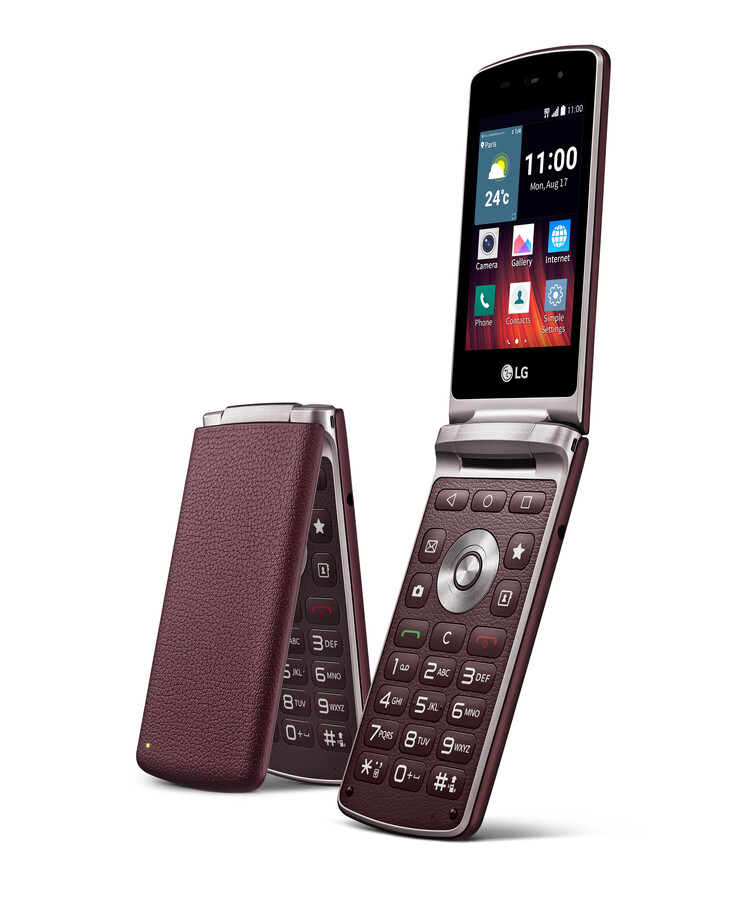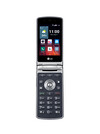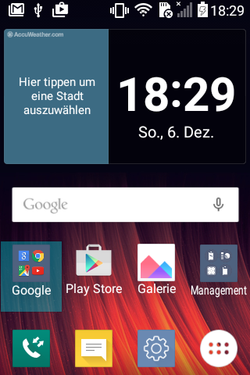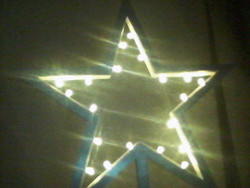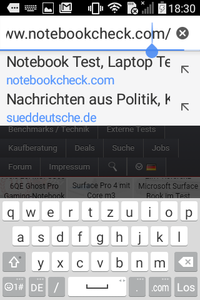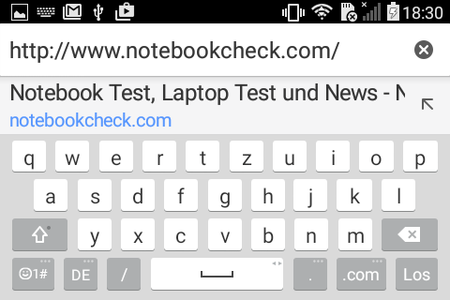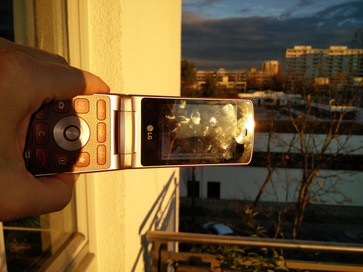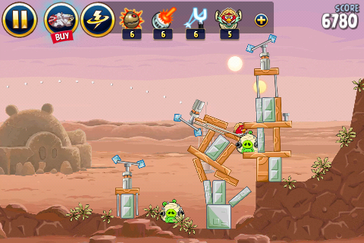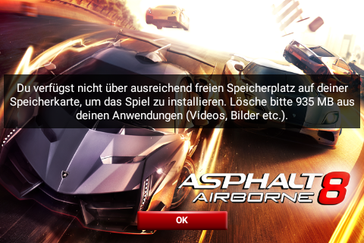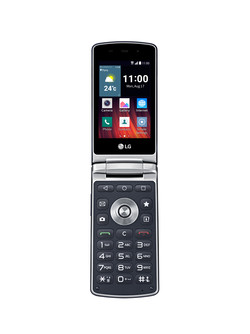LG Wine Smart Smartphone Review
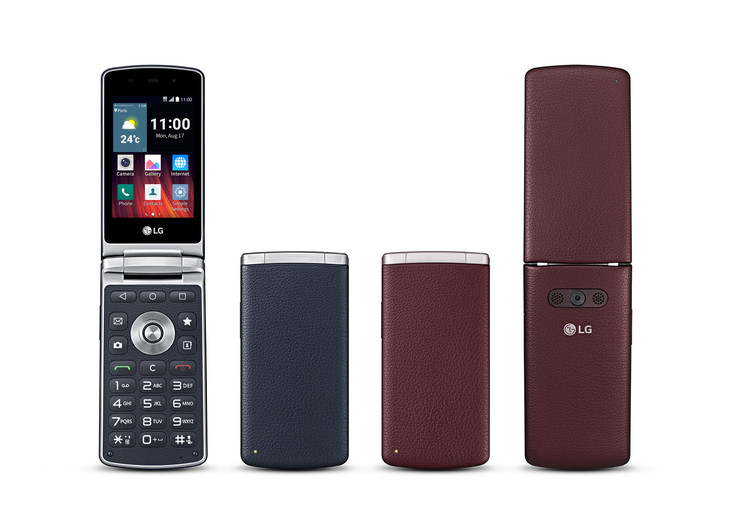
For the original German review, see here.
The wave of various retro-designs has engulfed smartphones as well and manufacturers like Samsung now offer flip (smart)phones. LG's entry goes by "LG Gentle" in Asia; in Europe the offering carries the somewhat awkward name "LG Wine Smart."
Equipped with a Qualcomm Snapdragon 210 CPU, 3.2-inch display, 1 GB RAM and 4 GB of storage (expandable with a MicroSD card), the LG Wine Smart offers entry-level hardware and sells for a street price of about 160 Euros (~$175). Operating the smartphone is possible via the classic key pad or the touchscreen. Whether this design is truly contemporary or just a bad compromise is the subject of our review.
Case
Glossy, burgundy-red faux leather, plastic that looks like brushed aluminum: considering the affordable price, LG went to great lengths to spruce up the smartphone. Alternatively, the LG Wine Smart is also available in a dark blue color. There's no external display, which we would have expected - after all, this is a flip phone. A single LED alerts the user to a missed call or other notification.
The back cover is removable and allows access to the (swappable) battery as well as the Micro-SIM card and the microSD card slots. We like the fact that the microSD card can be swapped out without removing the battery.
Compared to modern smartphones, the LG Wine Smart is somewhat bulky with its thickness of 16.6 mm. The overall stability is not that great and especially the display unit is fragile and flexes when pressure is applied.
Connectivity
Except for a micro-USB 2.0 port and a 3.5 mm headphone jack, the LG Wine Smart is lacking any additional physical ports.
Software
LG ships the Wine Smart with the current Android 5.1. Even though Android 6.0 is available already, not a lot of phones are equipped as such. Operating the phone with the physical keys or the small touchscreen might feel awkward at first, but it actually works pretty well.
LG doesn't preinstall a lot of software and the OS itself is only slightly modified from the original Android version. There's an app for emergencies and a backup solution from LG. The advantage is that the user doesn't have to uninstall a lot of bloatware. Applications can also be moved to the microSD card.
Communication & GPS
The LG Wine Smart offers LTE but only supports quad-band. GSM and UMTS are limited to four frequencies each as well, so the smartphone is by no means a "global" phone. WLAN 802.11 b/g/n and Bluetooth 4.1 are par for the course for this price class.
Ten meters from our router and through three walls, the signal strength had dropped to about 50% and the reception quality was diminished with pages loading noticeably slower than they would closer to the router. Surfing the web is a bit of a chore since the display only measures 3.2-inches.
Telephone & Sound Quality
Since the phone features physical keys, the phone app works not quite like it would on a "normal" Android 5.1-equipped phone. For one, the functions - for example, the list of received calls - are now actual apps. Pushing a key starts the phone application; at this point the user can simply dial a number.
The sound quality is OK, but the microphone is less satisfactory and our partner did complain about our voices sounding muffled.
Cameras & Multimedia
Unlike current smartphones, the LG Wine Smart isn't equipped with high-end cameras. The rear-facing camera offers a resolution of 3.2 MP, the front-facing camera only 0.3 MP. As a result, the photos of the rear-facing camera are small in size. A flash-LED is lacking as well. The color reproduction is pretty decent, but the details suffer thanks to the low resolution.
The picture quality of the front-facing camera is not even sufficient for selfies. One positive aspect: both cameras handle low light pretty well.
Input Devices & Operation
Since the display measures only 3.2-inches, the virtual keyboard is pretty tiny, but typing accurately is still just possible. The input via the physical keys is possible as well with T9 as one of the options. When touching an input field, the virtual keyboard is displayed but remains hidden when navigating with the physical keys. The combination of the two input options takes some getting used to, but it's actually a practical solution.
A few apps make a shortcoming of the touchscreen apparent, as it's a little inaccurate in the corners. Combined with the rather small symbols, the operation can be a little finicky - especially since the "back", "delete" and "end call" keys don't reveal which of these keys might solve the problem.
Display
A 3.2-inch display and a resolution of 480x320 pixels - those stats seem like they are straight from the era of "regular" cell phones and not smartphones. At least the display is quite bright at an average of 436.6 cd/m².
| |||||||||||||||||||||||||
Brightness Distribution: 84 %
Center on Battery: 442 cd/m²
Contrast: 680:1 (Black: 0.65 cd/m²)
ΔE ColorChecker Calman: 9.83 | ∀{0.5-29.43 Ø4.78}
ΔE Greyscale Calman: 11.09 | ∀{0.09-98 Ø5}
Gamma: 2.2
CCT: 12739 K
| LG Wine Smart Adreno 304, 210 MSM8909, 4 GB Flash | Wiko Rainbow Up Mali-400 MP2, MT6582, 8 GB eMMC Flash | Doogee Valencia2 Y100 Pro Mali-T720, MT6735, 16 GB SSD | Samsung Galaxy J1 Mali-400 MP2, SC8830, 4 GB Flash | |
|---|---|---|---|---|
| Screen | 21% | 3% | 6% | |
| Brightness middle (cd/m²) | 442 | 525 19% | 455 3% | 370 -16% |
| Brightness (cd/m²) | 437 | 500 14% | 428 -2% | 364 -17% |
| Brightness Distribution (%) | 84 | 90 7% | 84 0% | 95 13% |
| Black Level * (cd/m²) | 0.65 | 0.53 18% | 0.52 20% | 0.63 3% |
| Contrast (:1) | 680 | 991 46% | 875 29% | 587 -14% |
| Colorchecker dE 2000 * | 9.83 | 8.11 17% | 11.22 -14% | 5.99 39% |
| Greyscale dE 2000 * | 11.09 | 8.58 23% | 12.83 -16% | 7.28 34% |
| Gamma | 2.2 100% | 2.09 105% | 2.12 104% | 2.59 85% |
| CCT | 12739 51% | 8530 76% | 11911 55% | 7949 82% |
| Color Space (Percent of sRGB) (%) | 93.8099 |
* ... smaller is better
It's quite obvious that LG haven't put as much emphasis on the display quality of the Wine Smart as they probably would have had this been a "normal" smartphone. The screen matters much more for smartphones and the display needs to be as high-end as possible to allow for watching videos and looking at photos. For the LG Wine Smart, videos and pictures are almost out of the question anyway, so the black value of 0.65 cd/m² and the contrast ratio of 680:1 are still acceptable.
Our measurements with a spectrophotometer and the CalMAN software reveal a distinctive bluish hue. Colors are not accurate either and pink - to pick one example - looks more like purple.
The flip-feature has the advantage that the user can shield the display against bright light a little bit more easily, so the screen content remains visible. The symbols and text are much smaller, however, which in turn decreases readability. The brightness is sufficient for outdoor use.
Performance
Even during normal operation, the Wine Smart stutters and lags frequently, which doesn't bode well for performance enthusiasts. The phone is equipped with a Qualcomm Snapdragon 210 MSM8909 - a quad-core SoC running at up to 1.1 GHz - as well as an Adreno 304 GPU and 1024 MB of RAM.
Equipped with the above hardware, the phone is slower than comparable devices as far as the overall CPU and system performance, as well as the speed of the 4 GB of flash storage in particular, are concerned. Only the Samsung Galaxy J1 is slower still. The LG Wine Smart can handle simple tasks fairly well and even surfing the web is reasonably fast, but that's as much as one should expect.
| AnTuTu v5 - Total Score (sort by value) | |
| LG Wine Smart | |
| Wiko Rainbow Up | |
| Doogee Valencia2 Y100 Pro | |
| Geekbench 3 | |
| 32 Bit Single-Core Score (sort by value) | |
| LG Wine Smart | |
| Wiko Rainbow Up | |
| Samsung Galaxy J1 | |
| 32 Bit Multi-Core Score (sort by value) | |
| LG Wine Smart | |
| Wiko Rainbow Up | |
| Samsung Galaxy J1 | |
| GFXBench 3.0 | |
| on screen Manhattan Onscreen OGL (sort by value) | |
| LG Wine Smart | |
| Doogee Valencia2 Y100 Pro | |
| 1920x1080 1080p Manhattan Offscreen (sort by value) | |
| LG Wine Smart | |
| Doogee Valencia2 Y100 Pro | |
| Smartbench 2012 | |
| Productivity Index (sort by value) | |
| LG Wine Smart | |
| Wiko Rainbow Up | |
| Doogee Valencia2 Y100 Pro | |
| Samsung Galaxy J1 | |
| Gaming Index (sort by value) | |
| LG Wine Smart | |
| Wiko Rainbow Up | |
| Doogee Valencia2 Y100 Pro | |
| Samsung Galaxy J1 | |
| BaseMark OS II | |
| Overall (sort by value) | |
| LG Wine Smart | |
| Wiko Rainbow Up | |
| Doogee Valencia2 Y100 Pro | |
| Samsung Galaxy J1 | |
| System (sort by value) | |
| LG Wine Smart | |
| Wiko Rainbow Up | |
| Doogee Valencia2 Y100 Pro | |
| Samsung Galaxy J1 | |
| Memory (sort by value) | |
| LG Wine Smart | |
| Wiko Rainbow Up | |
| Doogee Valencia2 Y100 Pro | |
| Samsung Galaxy J1 | |
| Graphics (sort by value) | |
| LG Wine Smart | |
| Wiko Rainbow Up | |
| Doogee Valencia2 Y100 Pro | |
| Samsung Galaxy J1 | |
| Web (sort by value) | |
| LG Wine Smart | |
| Wiko Rainbow Up | |
| Doogee Valencia2 Y100 Pro | |
| Samsung Galaxy J1 | |
| AndroBench 3-5 | |
| Sequential Read 256KB (sort by value) | |
| LG Wine Smart | |
| Wiko Rainbow Up | |
| Doogee Valencia2 Y100 Pro | |
| Samsung Galaxy J1 | |
| Sequential Write 256KB (sort by value) | |
| LG Wine Smart | |
| Wiko Rainbow Up | |
| Doogee Valencia2 Y100 Pro | |
| Samsung Galaxy J1 | |
| Random Read 4KB (sort by value) | |
| LG Wine Smart | |
| Wiko Rainbow Up | |
| Doogee Valencia2 Y100 Pro | |
| Samsung Galaxy J1 | |
| Random Write 4KB (sort by value) | |
| LG Wine Smart | |
| Wiko Rainbow Up | |
| Doogee Valencia2 Y100 Pro | |
| Samsung Galaxy J1 | |
Gaming
Simple games like Angry Birds: Star Wars can be played without major caveats and the control via the touchscreen works well, but of course the screen size is quite small. The fact that the keypad-portion sticks out to either the right or left takes some getting used to, as it hinders access to the touchscreen.
More demanding games already approach the limits of the flash storage. Asphalt 8: Airborne, to name an example, needs 1.54 GB of space by itself and can't be installed at all with what's left over after the OS installation. In addition, larger downloads take a very long time.
Emissions
Temperature
Even under load, the phone doesn't behave out of the ordinary as far as the temperatures are concerned. We measured 36.7 °C in the upper area of the physical keys, which is noticeable, but no reason for concern. Given the weak SoC, this was to be expected. During idle, the phone doesn't get warm at all.
(+) The maximum temperature on the upper side is 36.7 °C / 98 F, compared to the average of 35.2 °C / 95 F, ranging from 21.9 to 247 °C for the class Smartphone.
(+) The bottom heats up to a maximum of 34.8 °C / 95 F, compared to the average of 34 °C / 93 F
(+) In idle usage, the average temperature for the upper side is 24.6 °C / 76 F, compared to the device average of 32.9 °C / 91 F.
Speaker
The speaker is located on the back and gets surprisingly loud. Quality-wise, the speaker is suitable for a quick Internet video. We wouldn't recommend listing to songs for extended periods of time, since the bass is lacking and the highs are over-emphasized. The fact that the LG Wine Smart emits sounds all the time is annoying - for example, when opening or closing the display portion. Fortunately, this can be turned off.
Energy Management
Power Consumption
The LG Wine Smart doesn't draw a lot of power, which can be attributed at least in part to the small display. On average, the phone consumes a third to one-half of what comparable smartphones need. That alone should guarantee long runtimes - or shouldn't it?
| Off / Standby | |
| Idle | |
| Load |
|
Key:
min: | |
Battery Life
Unfortunately, the battery only offers a capacity of 6.5 Wh; the Wiko Rainbow Up for example is equipped with a 10.3 Wh power source. While the LG Wine Smart can keep up with other smartphones as far as runtimes are concerned, it does require recharging after about one-and-a-half days. On the other hand, users probably won't use the Wine Smart much to surf the web, which in turn should increase the battery life. All things considered, the battery life is certainly acceptable, but we would've expected a little more here because of the small display.
| LG Wine Smart Adreno 304, 210 MSM8909, 4 GB Flash | Wiko Rainbow Up Mali-400 MP2, MT6582, 8 GB eMMC Flash | Samsung Galaxy J1 Mali-400 MP2, SC8830, 4 GB Flash | Doogee Valencia2 Y100 Pro Mali-T720, MT6735, 16 GB SSD | |
|---|---|---|---|---|
| Battery runtime | -2% | 13% | -41% | |
| Reader / Idle (h) | 17.4 | 18.7 7% | 21 21% | 12 -31% |
| WiFi v1.3 (h) | 10.4 | 10.6 2% | 10.8 4% | 5.1 -51% |
| Load (h) | 4.7 | 4 -15% | 5.4 15% | 2.8 -40% |
| H.264 (h) | 10.4 | 8.5 |
Pros
Cons
Verdict
The LG Wine Smart is targeted towards a particular user group and should interest those who like retro-designs and lament the disappearance of flip phones but still would like a modern OS, LTE and various apps. But even though all these criteria are met, there aren't any real advantages compared to a regular smartphone: the battery life isn't any better, the performance just average and navigating and browsing can be a chore because of the tiny display.
The combination of touchscreen and physical keys has its advantages, although the operation can get confusing at times. Even though we like the case with the swappable battery, the display section simply isn't rigid enough. The cameras are another weak point, as comparably-priced smartphones often offer much better quality and more possibilities.
For a price of 160 Euros (~$175), LG sells a piece of nostalgia taking us back to a time when phones like the Motorola Razr, Samsung's flip phone and the Nokia 7220 were state-of-the-art. Unfortunately, the LG Wine Smart requires a willingness to compromise and even then, it doesn't have a lot of advantages compared to a normal smartphone. We can only recommend it for those who are true flip-phone fanatics or users who simply want a phone to make calls. Even so, there are cheaper alternatives.
LG Wine Smart
- 12/07/2015 v4 (old)
Florian Wimmer




